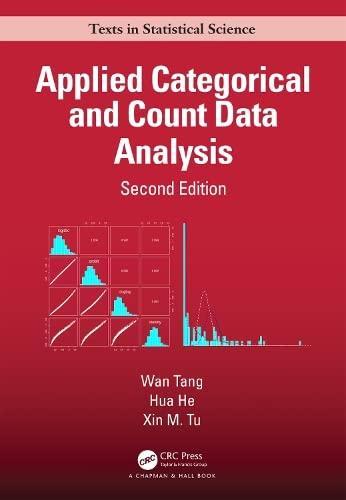Suppose (x) is a random variable with (m) levels such that (operatorname{Pr}(x=i)=p_{i}) for (i=) (1,2, ldots, m)
Question:
Suppose \(x\) is a random variable with \(m\) levels such that \(\operatorname{Pr}(x=i)=p_{i}\) for \(i=\) \(1,2, \ldots, m\) with \(\sum_{i=1}^{m} p_{i}=1\). In other words, \(x \sim \mathrm{MN}(1, \mathbf{p})\). Let \(x_{1}\) and \(x_{2}\) be two independent random variables following the distribution of \(x\).
(a) Compute \(\operatorname{Pr}\left(x_{1}=x_{2}\right)\).
(b) Among all the possible distributions of \(x\), i.e., among all different \(p_{i}\) with \(\sum_{i=1}^{m} p_{i}=1\), when will \(\operatorname{Pr}\left(x_{1}=x_{2}\right)\) have the minimum value? Please determine the minimum value of \(\operatorname{Pr}\left(x_{1}=x_{2}\right)\) and the distribution of \(x\) in this optimal case.
Step by Step Answer:

Applied Categorical And Count Data Analysis
ISBN: 9780367568276
2nd Edition
Authors: Wan Tang, Hua He, Xin M. Tu





